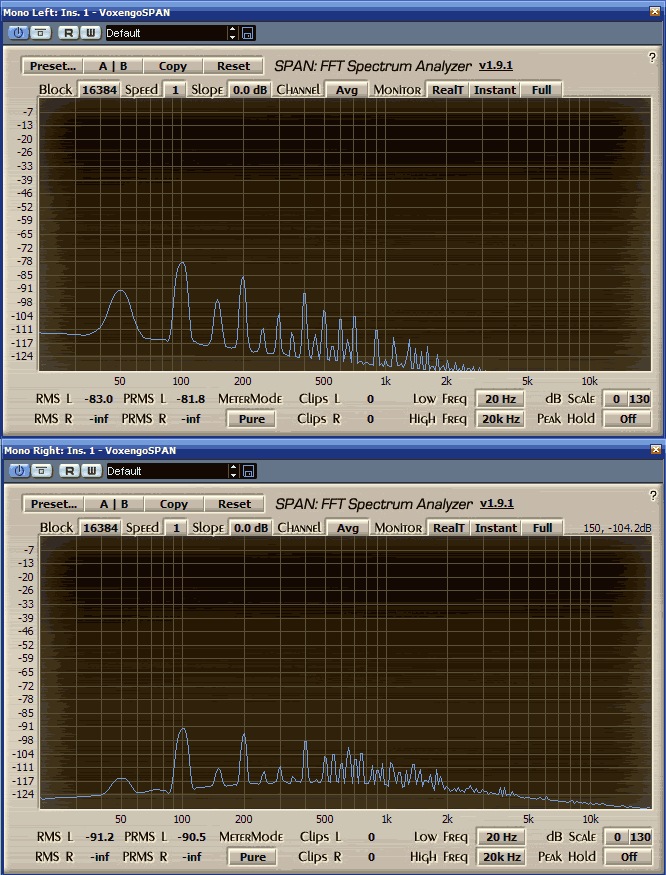Kingston
Well-known member
Hi people,
I've been recently doing shootouts between output transformers on the G9 preamp and running all kinds of tests with them as a learning experience. I now ran into an oddity I can't explain and would like to learn what's going on.
First some data,
B+ = 245.2VDC (0.4mVAC ripple, or basically as accurate as my fluke meter gets)
Heaters = 12.25VDC (2.9mVAC ripple)
No phantom
This is the preamp noise floor on the pictures. The top one is Edcor XSM 10K/600 (hacked to 2:1), and below is Lundahl LL5402 (2:1), both at the exact same gain, matched as accurate as possible (both transformers tested on two channels and they are exactly the same).

First of all, let's ignore the 50hz peak. I can almost completely remove that by optimal placement of the transformers (PSU or audio) inside the case (tested and proven).
But that 100hz peak! How come such a massive difference?
The oddest thing is that it will not move when I change gain. It's fixed at those exact points, no matter how the preamp is set. It won't change with different tubes. Yes, I realise this type of noise comes from points after the rectifiers, but my power is clean.
One last detail,
the peak seems to be at about 30dB above the general transformer noise floor on both cases. Lundahl noise floor is lower so the peak is also lower. What is this a clue of?
What could this noise be?
Regards,
Mike
I've been recently doing shootouts between output transformers on the G9 preamp and running all kinds of tests with them as a learning experience. I now ran into an oddity I can't explain and would like to learn what's going on.
First some data,
B+ = 245.2VDC (0.4mVAC ripple, or basically as accurate as my fluke meter gets)
Heaters = 12.25VDC (2.9mVAC ripple)
No phantom
This is the preamp noise floor on the pictures. The top one is Edcor XSM 10K/600 (hacked to 2:1), and below is Lundahl LL5402 (2:1), both at the exact same gain, matched as accurate as possible (both transformers tested on two channels and they are exactly the same).

First of all, let's ignore the 50hz peak. I can almost completely remove that by optimal placement of the transformers (PSU or audio) inside the case (tested and proven).
But that 100hz peak! How come such a massive difference?
The oddest thing is that it will not move when I change gain. It's fixed at those exact points, no matter how the preamp is set. It won't change with different tubes. Yes, I realise this type of noise comes from points after the rectifiers, but my power is clean.
One last detail,
the peak seems to be at about 30dB above the general transformer noise floor on both cases. Lundahl noise floor is lower so the peak is also lower. What is this a clue of?
What could this noise be?
Regards,
Mike


